Street Skew
Plenty of artists take inspiration from Google Maps. But Arden Bendler Browning’s abstractions of urban landscapes convince us the city—riotous and tamed, growing and decaying—is more alive than we think.

Interview by Karolle Rabarison
The Morning News: To which of your paintings are you most attached?
Arden Bendler Browning: I am most attached to whichever painting is the most current one that I’ve finished. And whichever one is currently in progress is the one that I absolutely hate (for the moment). Continue reading ↓
"Clickpath" opens at Bridgette Mayer Gallery on Dec. 12, 2012 and will be on view through Jan. 19, 2013. Her work is also on view in Bridgette Mayer's booth at Art Miami, Dec. 4–10, 2012. All images are © copyright of the artist and Bridgette Mayer Gallery. Used with permission. All rights reserved.
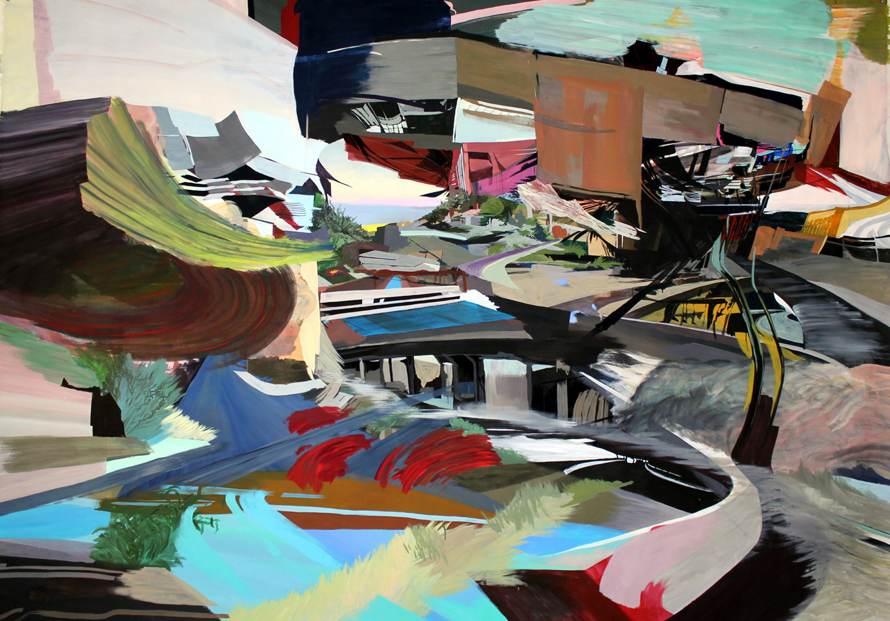
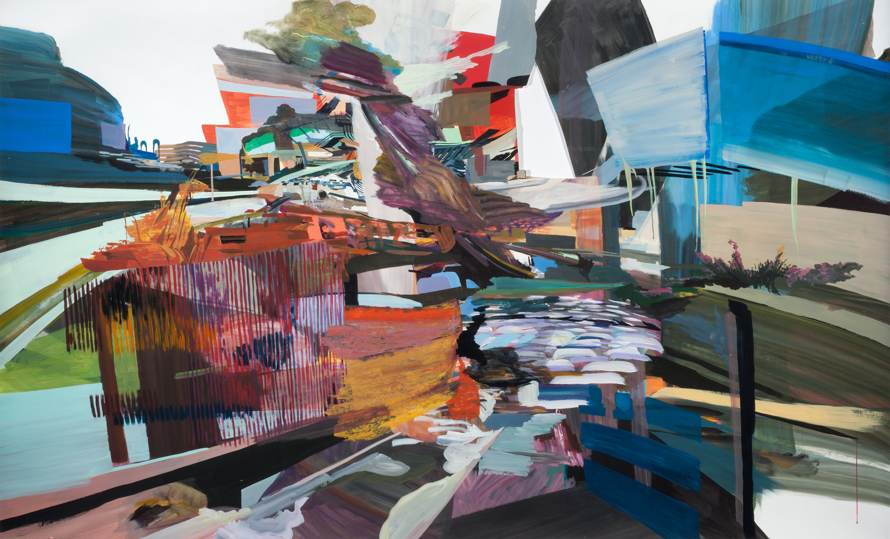
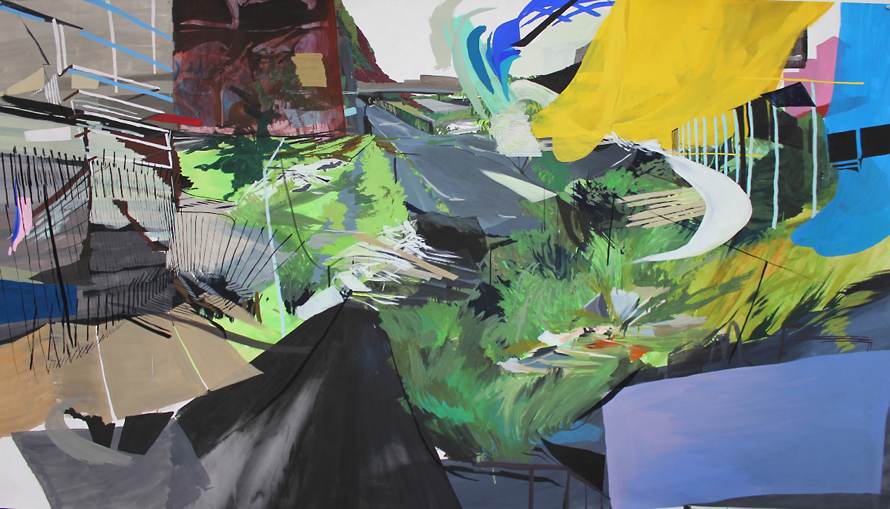
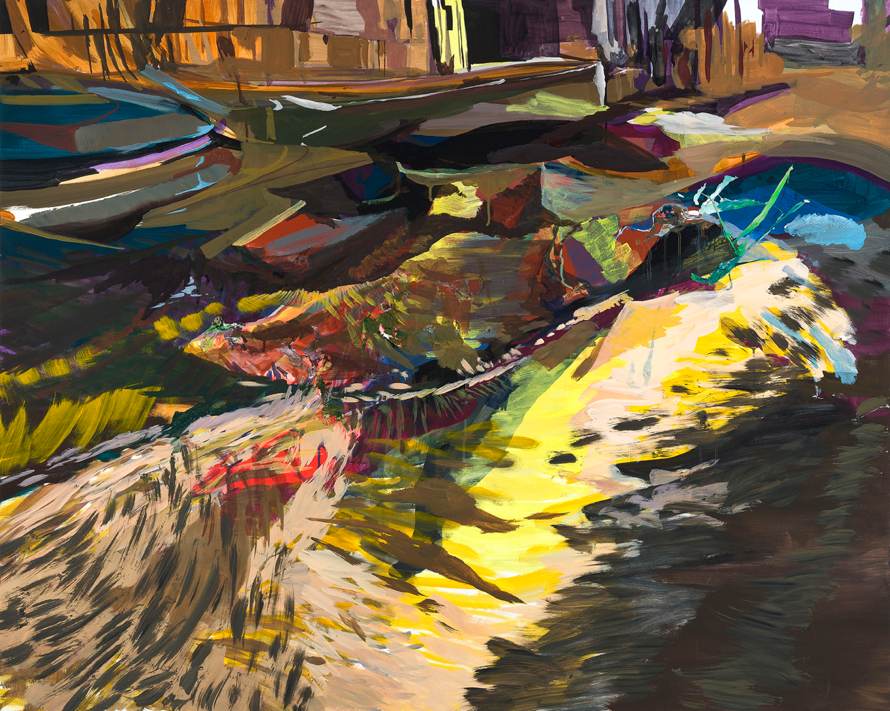
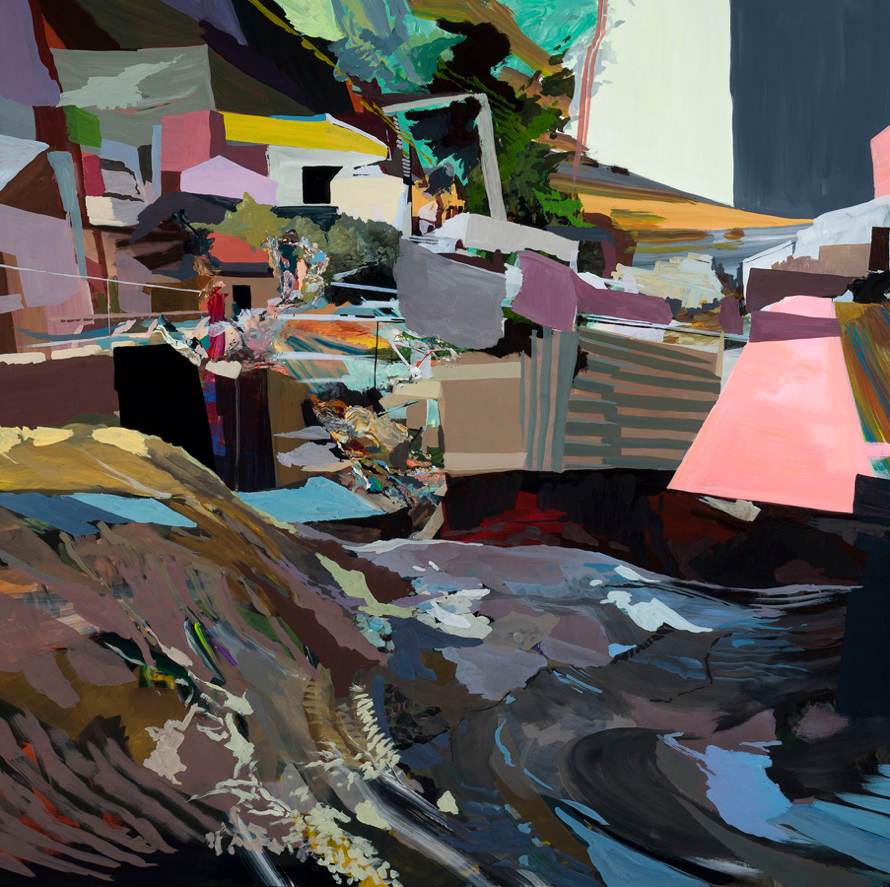
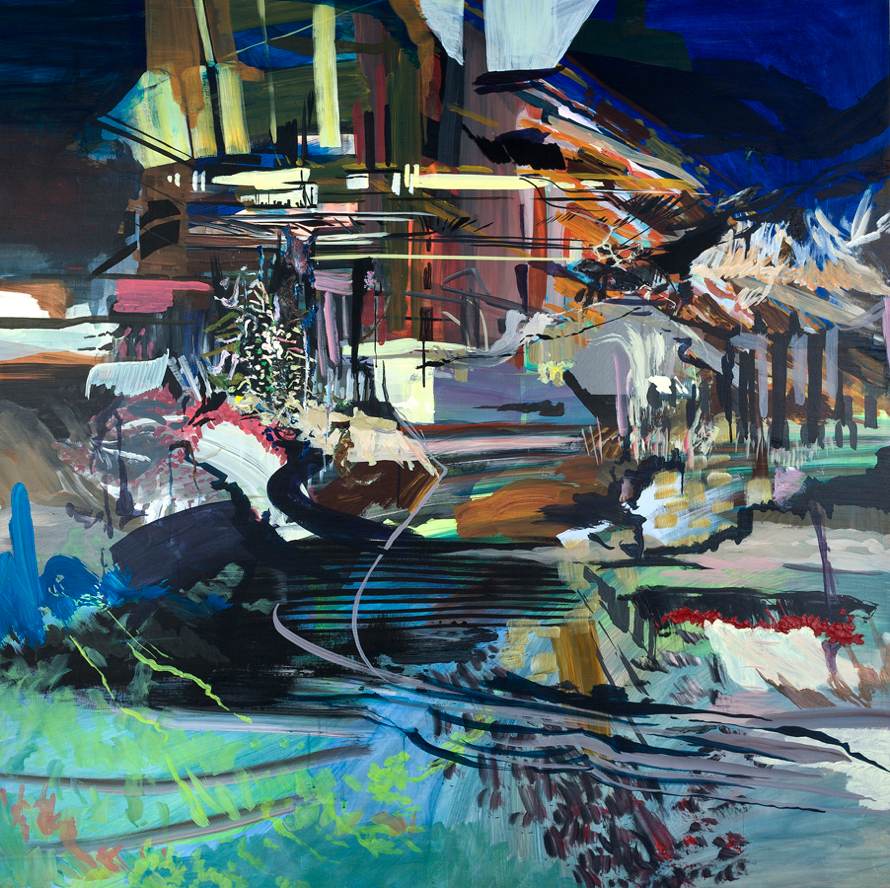
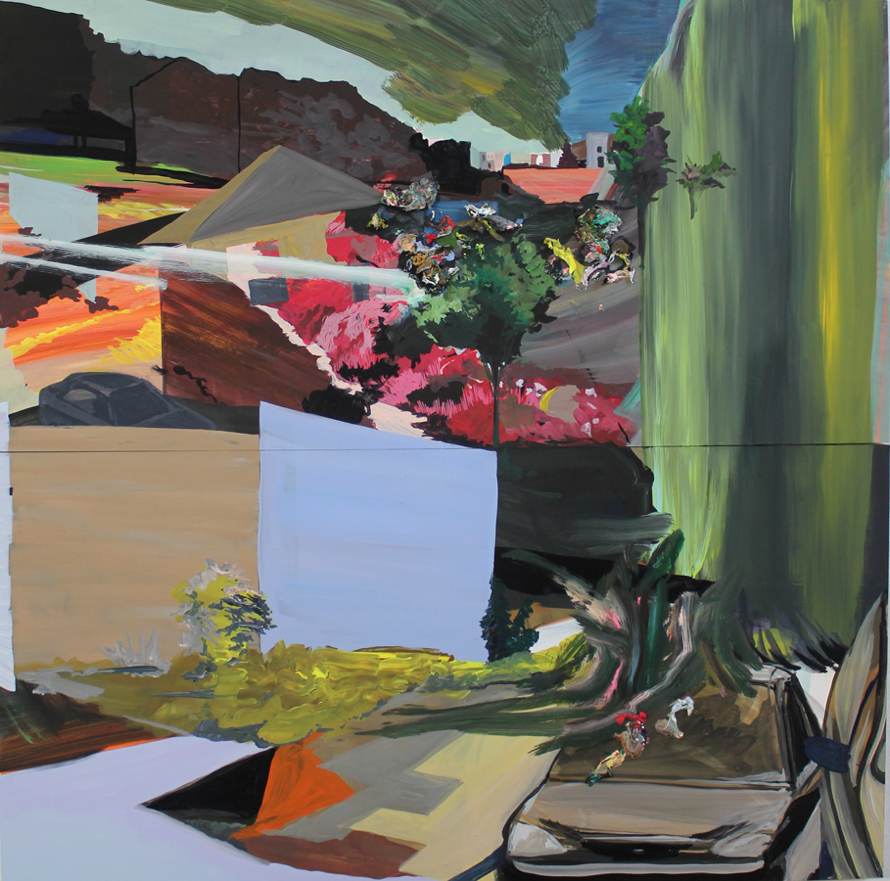
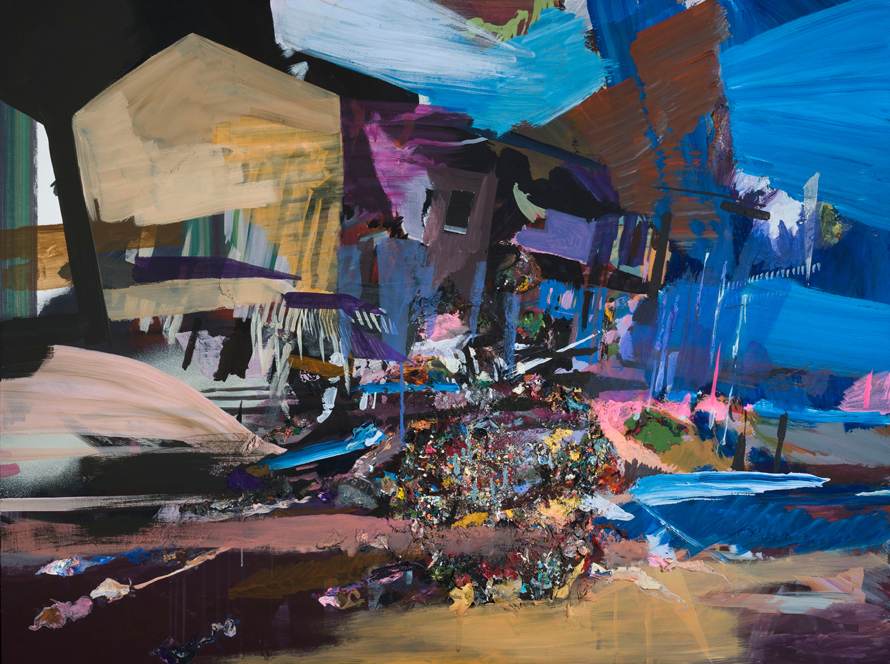
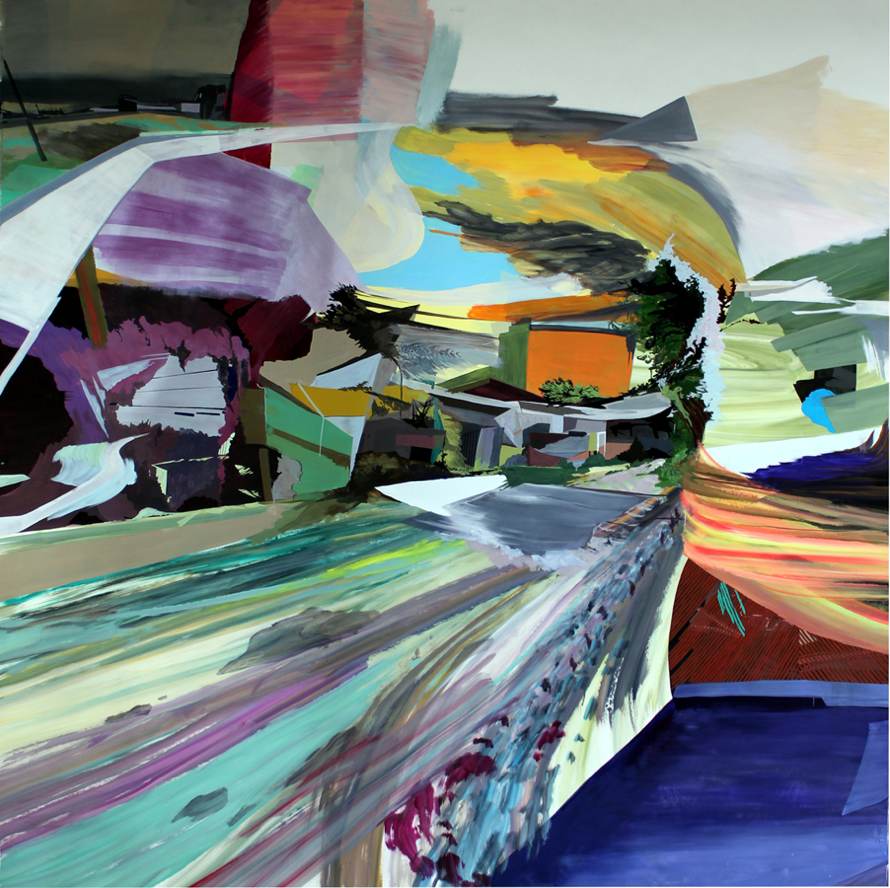
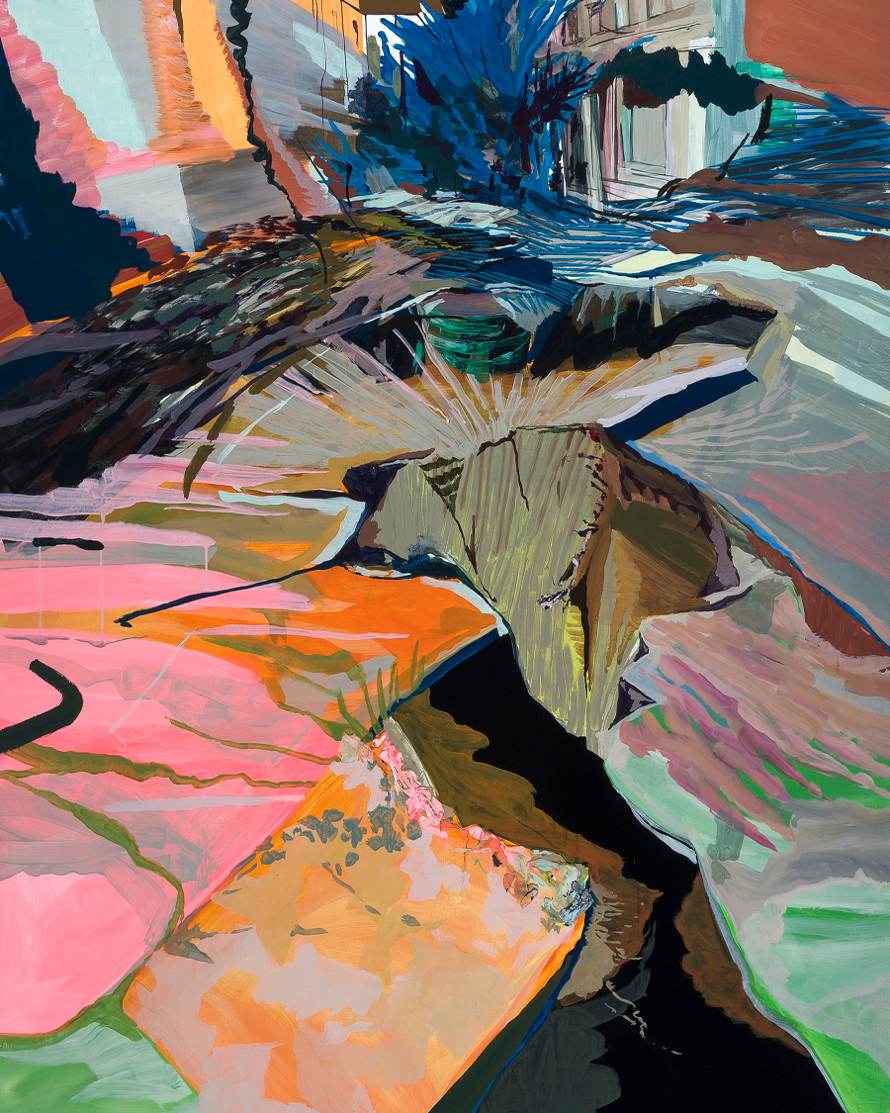
Interview continued
TMN: Do you think of the viewer as you’re working?
ABB: I try very hard not to think about how the painting looks or how someone else may consider it until it gets very near completion, which is usually about the time when I am dumbfounded and feel lost. I have a hard time seeing my paintings for a while after they are finished, so I try to gain some outside perspective by sometimes asking trusted people how the painting functions for them. The magic of painting happens for me when the work begins to develop a life of its own.
My marks lose vitality if I am too explicit in dictating the way that the painting should be. They become too predictable if I think of the viewer too much.
TMN: Philadelphia aside, what is one city you would visit again and again?
ABB: I seem to visit Sydney and Rome often in my dreams. I’ve lived in both places, so they are special cities to me. Rome feels like a labyrinth in my memory, with some interesting overlaps with Philadelphia oddly enough (the layers of history and ruins?), while Sydney symbolizes vast distances, a different feeling of home, and a love of the ocean.
TMN: What is your favorite mode of transportation?
ABB: Walking when in a city. Driving when traveling long distances. I like having access to public transportation, but I love having independence and freedom to choose my path, speed, and focus.
TMN: Your experience observing urban landscapes includes time spent zooming in and out of street views on Google maps. What elements in your paintings reflect that inspiration?
ABB: For me, it’s the colors running together in long swipes from a sponge; small detailed sections which are still not quite possible to understand; the confluence of different perspectives and transparencies; the way that shapes sometimes begin to suggest buildings and then dissolve into a blur.
TMN: What kind of books did you read growing up?
ABB: Novels, classic literature, short stories, history, art books, and books of piano and flute music. As a young child, I loved Dr. Seuss and Jose Aruego. Newspapers were also important to me. My parents had several around. I couldn’t read enough during the MOVE tragedy, when I was 10.
TMN: How do you spend your Saturday mornings?
ABB: I am not a morning person. Luckily, no one else in my house is either. My husband and twin daughters and I usually have a leisurely breakfast, and then I get to work in the studio for the whole day. It is my only full day to be able to do that, so Saturday tends to be my favorite day of the week.
TMN: Was there a period of time when you didn’t paint?
ABB: Yes—but when I didn’t, I drew. Painting requires space and supplies that drawing does not. I’ve been painting pretty consistently since high school. That being said, I’ve had to take breaks from painting during periods when I was without a studio space. In the long run, I think those times have been helpful for my artistic growth, but they were frustrating and difficult. That includes an almost two year stretch during my pregnancy and the first year and a half of my daughters’ lives. During that time, I made smaller collages at home instead. It provided some much needed new perspective and visual vocabulary which informed my subsequent paintings, but when I am away from painting for too long, I become very agitated and unhappy. There were plenty of times in graduate school when I said I would no longer paint, but it never lasted for very long.
TMN: Is there a school—painters or otherwise—to which you feel you belong?
ABB: Not really. I think that choosing to be an artist has meant not fitting in, at least for me. If I felt too much of a tie, I don’t know that I’d be as driven to do my own thing. There are obvious affinities I share with many different “schools”—painterly painters, abstract expressionists, Futurists, and other artists who work with maps, urban themes, landscape, and blurring the distinctions between representation and abstraction. But in pretty much every case, I would say, “I identify with them, except for—”
